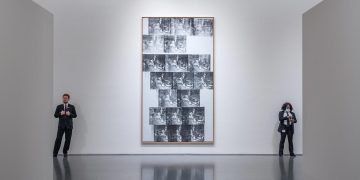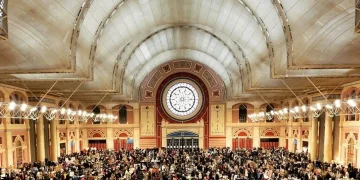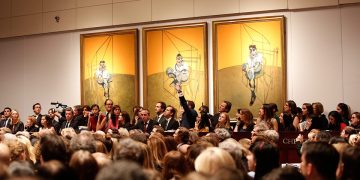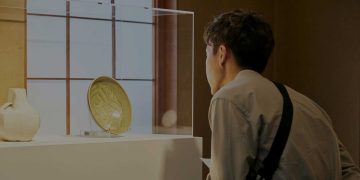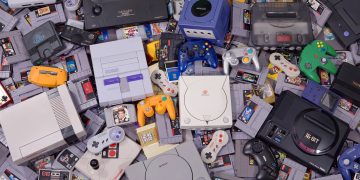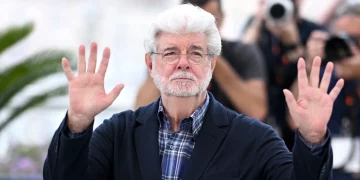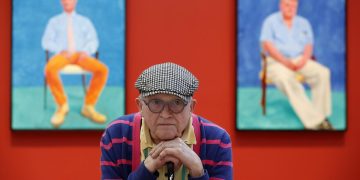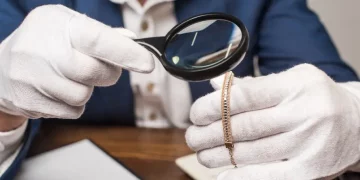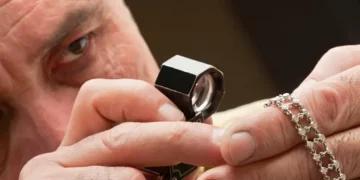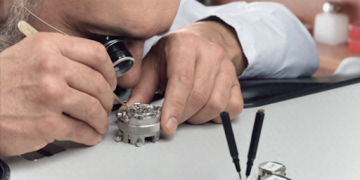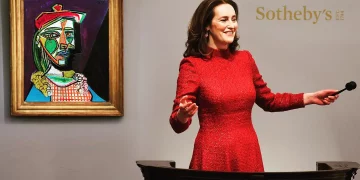The world of collecting, traditionally dominated by older generations with decades of experience, is undergoing a significant transformation. Young collectors are rising to the forefront, bringing fresh perspectives and innovative methods that are challenging established norms and breaking down traditional barriers within the collecting world. These young collectors are reshaping how items are valued, acquired, and shared, and their approach is redefining what it means to be a collector in the modern age.
In this article, we will explore the ways in which young collectors are disrupting the traditional collecting world. From leveraging technology to embracing non-traditional collectibles, these young enthusiasts are challenging the status quo and paving the way for a new era in collecting.
1. Digital Platforms and Online Communities
One of the most significant ways in which young collectors are reshaping the collecting world is through their embrace of digital platforms. Unlike older generations who may have relied on physical marketplaces, auction houses, or brick-and-mortar stores, young collectors are making use of online communities and platforms to connect with others and acquire rare items.
Social Media as a Collecting Hub
Social media platforms like Instagram, TikTok, and YouTube have become essential tools for young collectors. Instagram, in particular, has become a vibrant hub for showcasing collections, connecting with like-minded individuals, and discovering rare items. Many young collectors use these platforms to share photos of their collections, exchange knowledge, and engage with a global audience.
For instance, Instagram’s visual nature allows collectors to showcase their collections creatively, offering a glimpse into their personal collecting journey. Collectors can easily network with other collectors around the world, participate in live auctions, or get direct access to sellers who might not have been reachable through traditional means. In turn, this has led to a more diverse and accessible marketplace, where young people can participate in the collection process on their own terms.
Online Auctions and Marketplaces
Websites such as eBay, StockX, and even specialized platforms like Heritage Auctions have made it easier than ever for young collectors to engage in buying and selling. These digital marketplaces remove geographical barriers, allowing collectors to bid on items from around the world and connect with sellers who have niche collectibles. The convenience and accessibility of these platforms have made collecting more inclusive, particularly for younger people who are comfortable navigating the digital world.
2. Embracing Non-Traditional Collectibles
Traditional collectibles, such as fine art, coins, rare stamps, or vintage sports cards, have long been the domain of established collectors. However, younger generations are breaking away from these classic categories and embracing more unconventional forms of collecting. From digital art and sneakers to memes and rare video game items, young collectors are shifting the focus toward new, often unconventional collectibles that speak to their interests and lifestyles.
Sneaker Culture
One area in which young collectors have made a major impact is the sneaker market. Sneakers, once primarily seen as functional footwear, have evolved into highly sought-after collectibles, with limited-edition releases and collaborations with designers or celebrities driving up demand. Young collectors, particularly those in the Gen Z and Millennial generations, have capitalized on this trend by creating a sneaker culture that’s centered around exclusivity and hype. These collectors often turn sneakers into investments, with some pairs selling for thousands of dollars on resale platforms like StockX and Stadium Goods.
Sneaker collecting has bridged the gap between fashion, art, and investment, and young people are at the forefront of this movement. Through social media, they’ve created communities that promote the hunt for rare sneakers, engage in trades, and discuss the value of different models, fundamentally altering how collectibles are viewed and traded.
Digital Art and NFTs
Another area where young collectors are making waves is in the world of digital art and NFTs (Non-Fungible Tokens). NFTs are digital assets that use blockchain technology to verify ownership, allowing creators and collectors to buy and sell unique digital works such as art, music, and even tweets. The NFT boom has introduced an entirely new category of collectibles that appeal to a digitally native generation.
Young collectors are particularly drawn to NFTs because they combine the excitement of collecting with the benefits of digital ownership, where the scarcity of an item is verifiable through blockchain technology. NFT platforms like OpenSea, Rarible, and SuperRare have created marketplaces where young collectors can acquire works from digital artists, flipping them for profit or simply enjoying the aesthetic value.
The embrace of NFTs has also brought together artists, collectors, and investors in new ways, creating a sense of community and collaboration around these digital assets. This new wave of collecting has disrupted traditional art collecting and created a whole new space for digital creators to thrive.
3. Crowdsourced and Collaborative Collecting
Young collectors are also breaking down traditional barriers by engaging in crowdsourced and collaborative collecting. This approach contrasts with the more individualistic collecting habits of previous generations, where each collector would typically pursue their own personal collection without much collaboration. Today, however, young collectors are increasingly working together, pooling resources, and creating joint collections to access rare items they may not be able to afford on their own.
Group Buying and Shared Investments
Through platforms like Discord and Slack, young collectors are organizing group buys, where multiple people come together to purchase high-value items like vintage watches, limited-edition sneakers, or rare trading cards. By pooling their money, these collectors can acquire items they might not be able to afford individually, and then share or trade the items within their group.
In addition to the financial benefits, this type of collaboration fosters a sense of community and shared excitement. Young collectors who might not otherwise have had the opportunity to participate in high-end auctions or acquire specific items can now access those markets by collaborating with others.
Crowdsourced Knowledge Sharing
Young collectors are also leveraging online forums and social media platforms to crowdsource knowledge about rare collectibles. By participating in specialized groups, Reddit threads, or Facebook groups, they can learn from one another, share tips, and exchange valuable insights. This open-source knowledge sharing is allowing younger collectors to become experts in niches they might otherwise have no exposure to. Additionally, platforms like YouTube and TikTok have enabled collectors to share tutorials, reviews, and advice about rare collectibles, making it easier for new collectors to navigate the market.
4. Sustainability and Ethical Collecting
Younger generations are increasingly concerned with sustainability and ethics, and this mindset is extending to the world of collecting. Instead of focusing solely on the value or exclusivity of an item, young collectors are considering the environmental impact of their purchases and the ethical implications of their collecting habits.
Sustainable Collectibles
Many young collectors are gravitating toward secondhand, vintage, or upcycled items, preferring to give old objects a second life rather than contributing to the demand for new, mass-produced goods. In categories like fashion, antiques, and furniture, young people are investing in sustainable, eco-friendly options that align with their values. For example, vintage clothing has become a popular collecting category, with many young people seeking out rare designer pieces from past decades and supporting the circular economy.
Ethical Sourcing and Fair Trade
In other areas of collecting, such as fine art, jewelry, or antiques, young collectors are increasingly prioritizing ethical sourcing. They are taking a stand against items that may have been acquired through exploitative practices or that come with controversial histories. This ethical approach is pushing the broader collecting world to consider the social and environmental implications of how items are sourced, preserved, and sold.

5. Redefining the Meaning of “Collecting”
Finally, young collectors are rethinking what it means to be a collector. While older generations may have viewed collecting as an activity focused solely on acquiring valuable items or building a prestigious collection, today’s young collectors are redefining the concept to include a wider range of experiences and emotional connections with the items they collect.
Focus on Personal Connection Over Financial Value
Rather than focusing purely on financial gain, many young collectors are motivated by personal connection and emotional fulfillment. Whether they’re collecting vinyl records, comic books, or sneakers, young people are often drawn to items that reflect their tastes, interests, or identities. This shift in perspective means that collecting is no longer just about investment—it’s about passion, self-expression, and the joy of finding something that resonates on a personal level.
Conclusion: The Future of Collecting is Young
Young collectors are undeniably transforming the world of collecting. By embracing digital platforms, non-traditional collectibles, and collaborative methods, they are breaking down the traditional walls that once separated different collecting niches and generations. Their focus on sustainability, ethics, and personal connection is reshaping the landscape, making collecting more inclusive, diverse, and accessible than ever before.
As these young collectors continue to challenge established norms and create new trends, the future of the collecting world will undoubtedly be shaped by their innovative approaches. The barriers that once kept certain types of collectibles or knowledge within closed circles are now being dismantled, allowing for a more dynamic, global, and exciting world of collecting to emerge.










